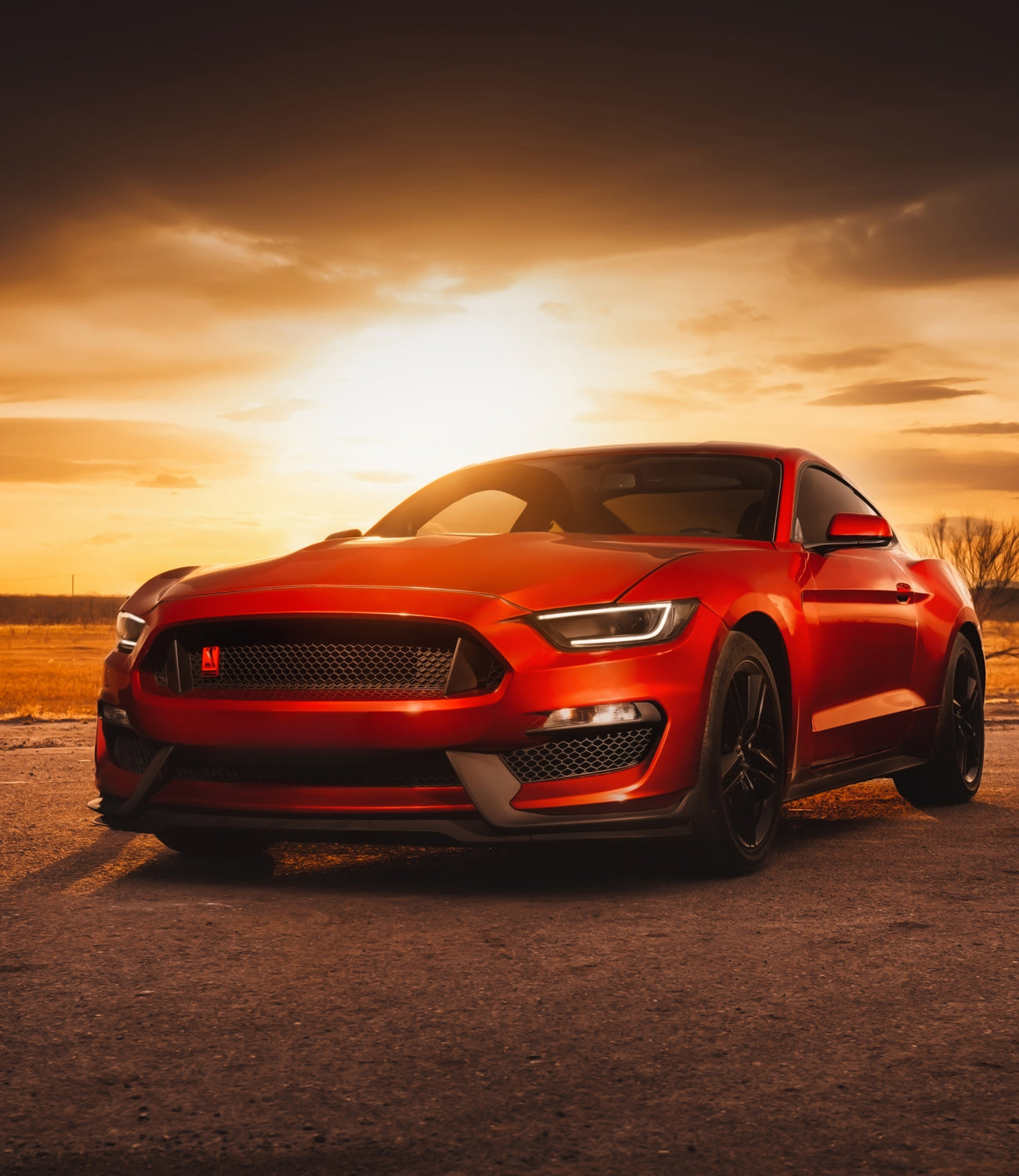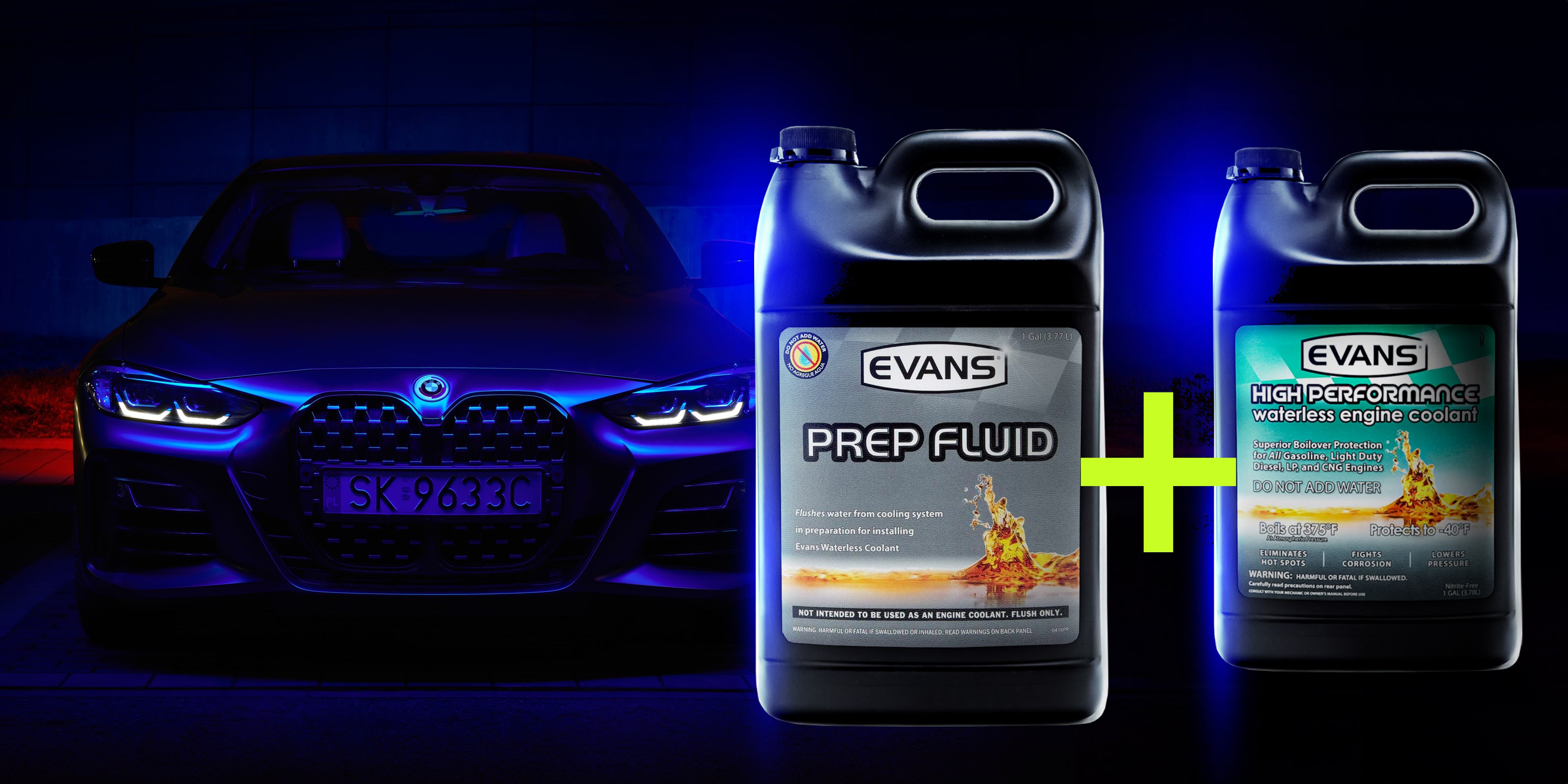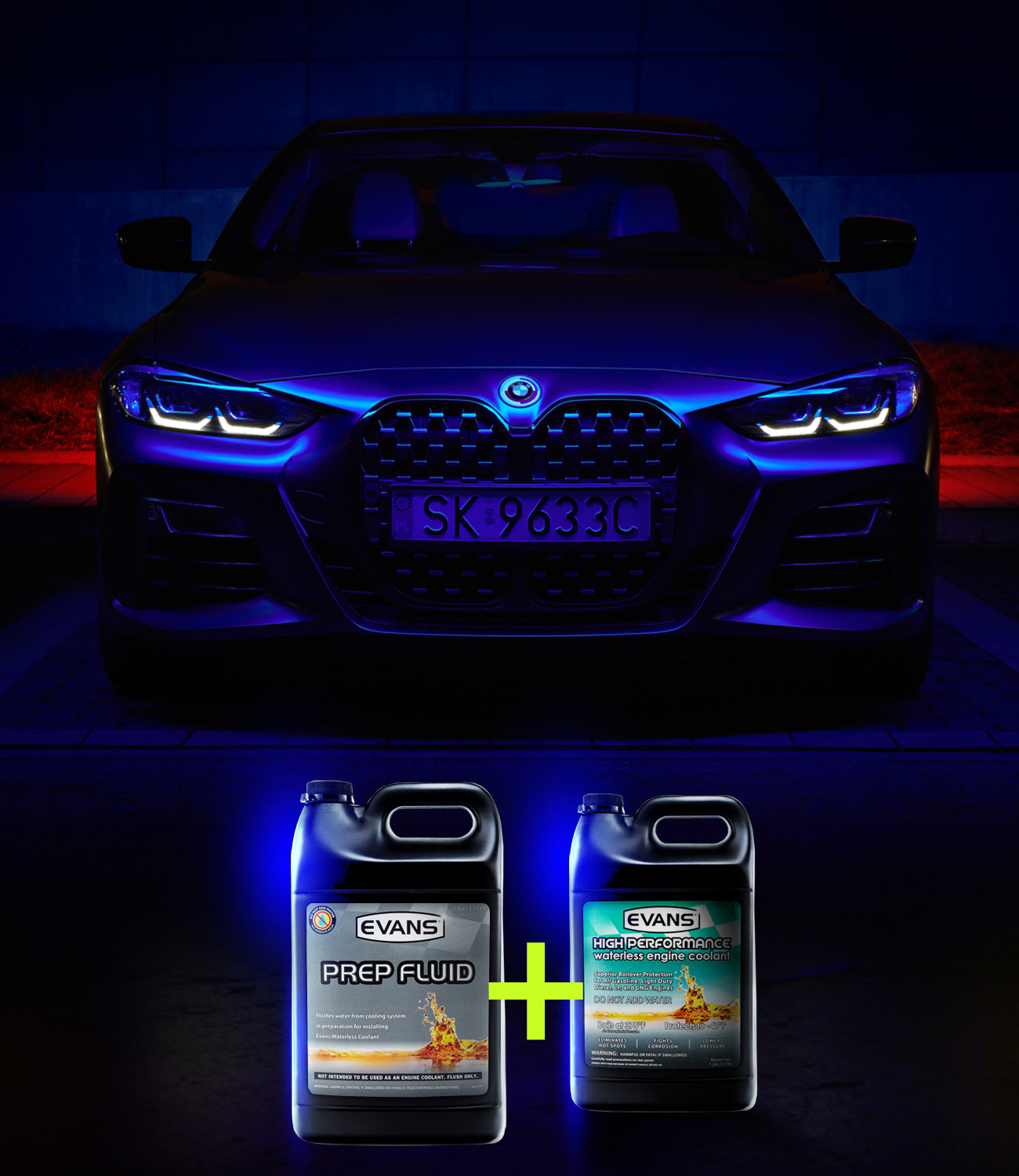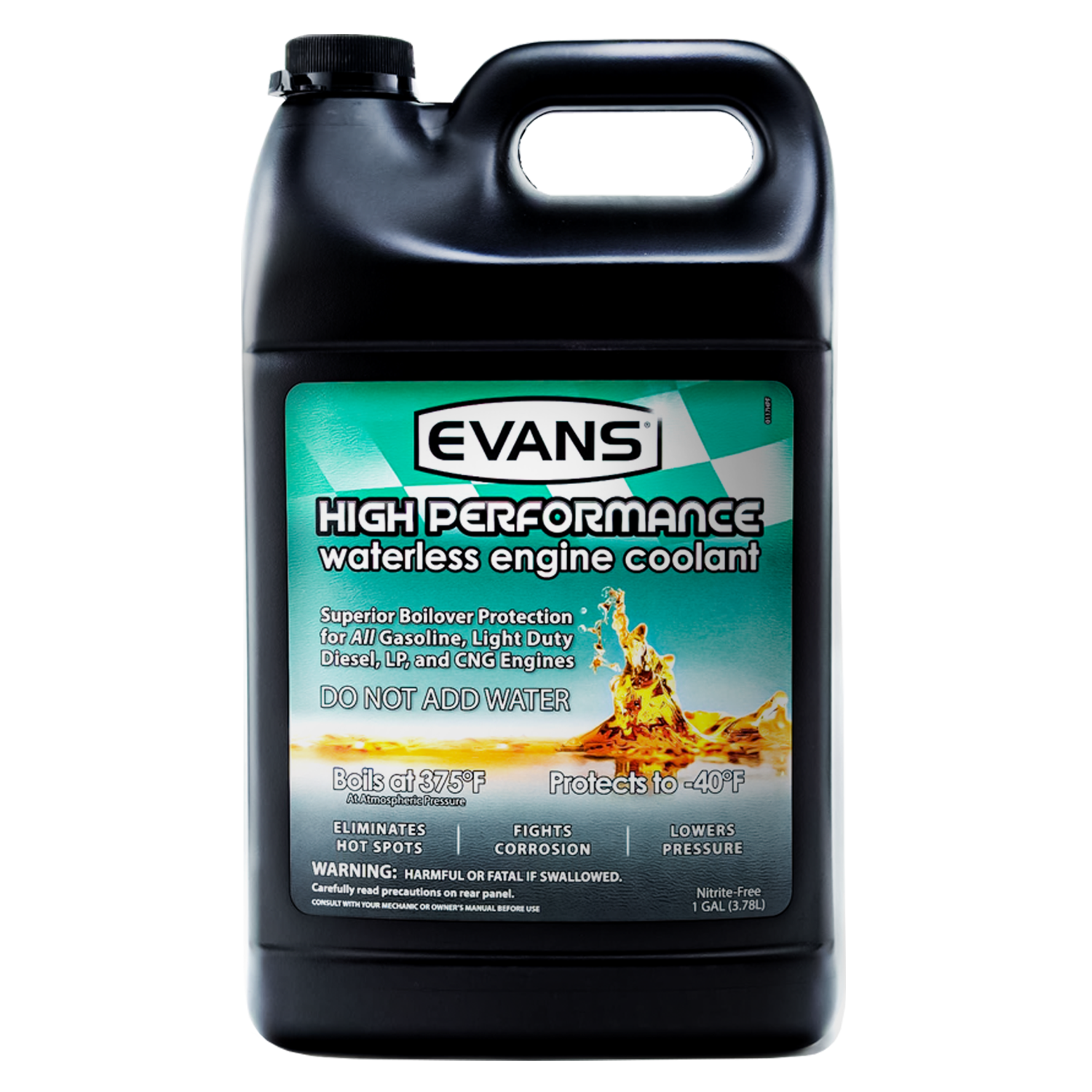
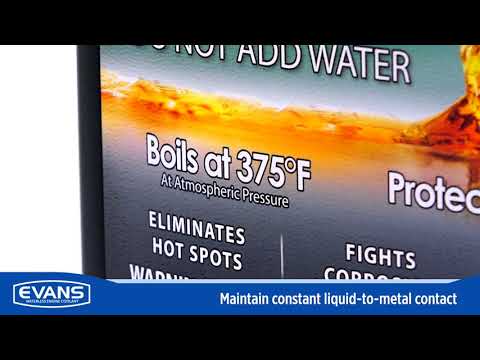
EVANS HIGH PERFORMANCE WATERLESS COOLANT
For high performance, light to heavy duty diesel, off-road, overland, CNG, and LP engines
Evans High Performance waterless coolant is designed for all gasoline and light duty diesel engines. Evans coolant eliminates many problems associated with water in conventional water-based cooling systems, while increasing reliability and engine life. You love your vehicle—it deserves Evans.
Engine Types
- High Performance
- Overland
- Hot Rod & Muscle Cars
- Off-road
- Light to heavy duty diesel
- LP
- CNG

Features
Evans High Performance coolant is ready to use—no water required. It contains no silicates or phosphates and requires no Supplemental Coolant Additive (SCA).
SDS SHEETHigh Performance Waterless Engine Coolant is for:
Modern, classic, and vintage gasoline engines; light duty diesel; LP; and CNG
Boiling Point:
Above 375°F
Antifreeze Properties:
Protects below -40°C
Benefits:
Eliminates corrosion, electrolysis and reduces pump cavitation, lowers system pressure, prevents overheating
Life Span:
Provides extended protection for the engine. Extended Life
375°F
BOILING POINT 375°F (AT ATMOSPHERIC PRESSURE) AVOIDS VAPOR, HIGH PRESSURE, BOIL-OVER
-40°F/C
PROTECTS TO -40°F/C | CONTRACTS WHEN FROZEN | PREVENTS FREEZE BURST
4X4 | OVERLANDING
Evans High Performance Waterless Coolant is formulated to provide maximum temperature management and corrosion protection for all metals, including aluminum and magnesium. The reduced vapor pressures, consequently extends the life of cooling system components. An engine worked to the limit can cause traditional water-based coolants to vaporize, creating steam and engine over-boiling. With Evans you can tackle extreme terrain without worrying about overheating your engine.
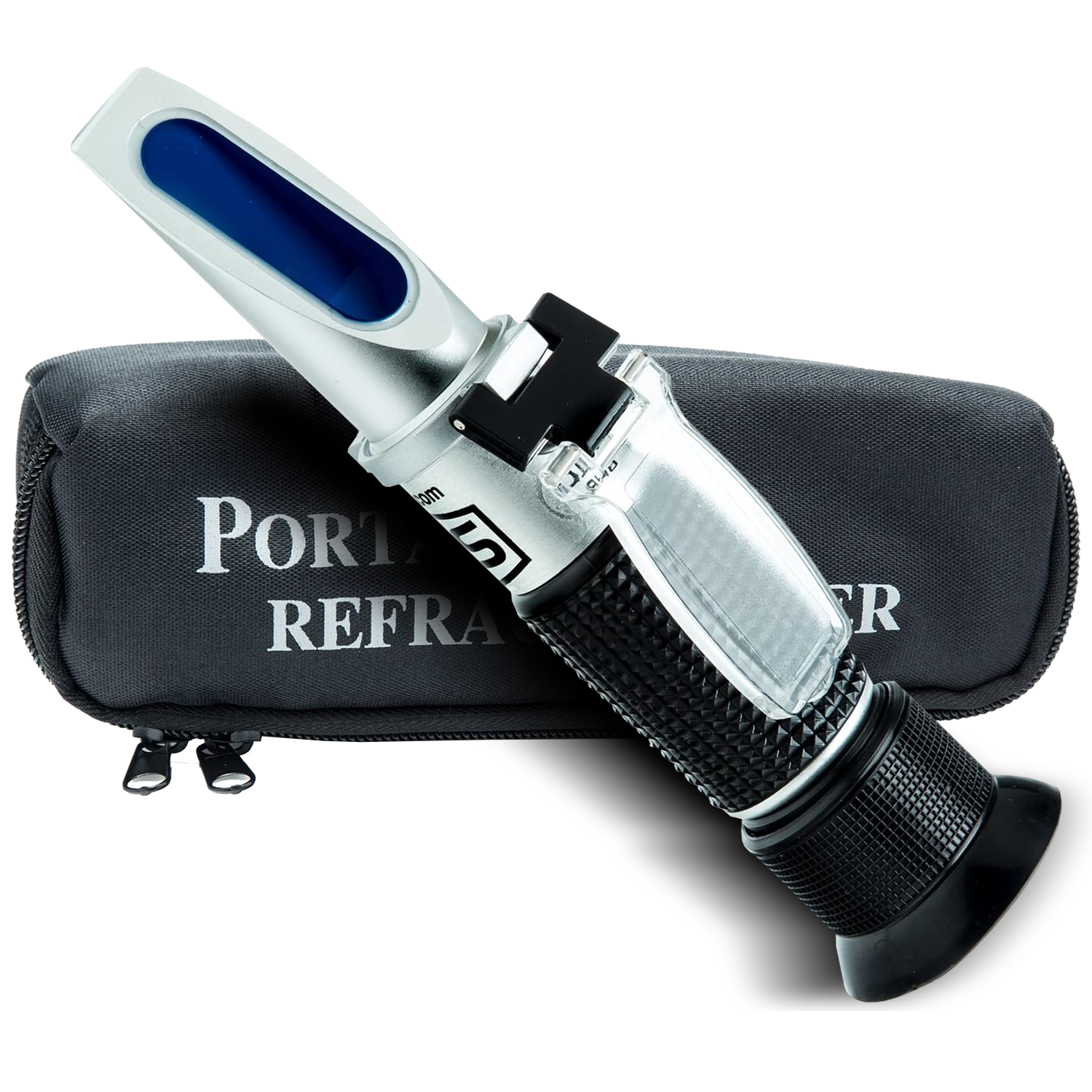
REFRACTOMETER
Designed for an Accurate Conversion.
This Evans Cooling Refractometer is designed to accurately test for residual water content. By determining the water content you'll be able to safely set up your cooling system with Evans Cooling products.
- Fast, simple optical method
- Requires only 1 drop of coolant
- Compare optical reading to water content chart

Download Complete Refractometer Instructions - Part #E2196 pdf
INSTALLATION
Procedure for Auto Performance and 4x4 Overland vehicles.
1. Drain the System:
• Remove the pressure cap. Open all drain valves and plugs. Open bleeder or petcock vents if there are any.
• Drain all parts of the system, including radiator, coolant reservoir, engine block, and heater. (Draining the system only from the bottom of the radiator removes less than half of the system capacity.)
• Use high-volume/low pressure air to gently blow out various parts of the system. If accessible, blow out heater circuit, blowing only in the direction from the hot coolant source (generally, the cylinder head) toward the coolant return (generally, the inlet to the coolant pump). Ensure that the heater control valve is open before applying the air.
• Block drains are frequently inaccessible, ineffective, or non-existent, and considerable amounts of coolant can remain in the block. Removal of the thermostat provides an opening to the engine where high volume air can be blown through the head and block, pushing old coolant past the coolant pump and out the bottom radiator hose or radiator drain.
• Engines having an “inlet side” thermostat and a good block drain (e.g., DD15) do not require removal of the thermostat. With the block drain open, air blown toward the engine through the top radiator hose will purge the residual coolant in the block.
• Completely empty the overflow bottle if the vehicle is equipped with one. If the system has a pressurized expansion tank, blow air into it to make sure it is empty.
2. Purge the System:
• Close all drain valves, plugs, and vents, and reconnect circuits. If the engine is equipped with a coolant filter (heavy duty systems), replace the filter with one that does not introduce coolant additives.
• Fill the system with Prep Fluid to flush parts of the cooling system suspected of harboring residual coolant or water. DO NOT use water. Vent as needed to ensure complete fill.
• Replace the pressure cap and run the engine with the heater on, at full hot, for 10 minutes after reaching operating temperature (thermostat open).
• Repeat the Drain sequence above to drain out the used Prep Fluid.
3. Refill the System:
• Close all drain valves, plugs and vents, and reconnect all circuits.
• Fill system completely with the appropriate Evans waterless coolant and start engine. Add coolant as needed to keep system full. If system is equipped with a vented overflow bottle, leave it empty for now.
• Replace the pressure cap and run engine with the heater on, at full hot, for 10 minutes after reaching operating temperature (thermostat open). Shut the engine off and allow the system to cool.
4. Test the Coolant:
• Draw a sample of well-circulated coolant from the radiator or pressurized overflow reservoir. Check the water content using a refractometer or test strips as outlined in Appendix 1 of the General Installation Booklet. The coolant being tested must be at room temperature before testing. Minimize exposure of the coolant to air during testing.
• If the above procedure has been rigorously followed, the water content of the coolant should be within specification (below 3%) to take best advantage of the waterless coolant technology. If the water content exceeds 3%, run the system again to operating temperature, and allow sufficient time for the thermostat to open and fluid to circulate through the radiator. Repeat sampling and water content test. If the water content still exceeds the limit, see remediation procedure under Test Strips in Appendix 1 in the General Installation Booklet.
• If the water content is 3% or less, the equipment is ready for use. Ensure the overflow bottle or expansion tank is filled to the “cold” mark with Evans waterless coolant. Place Evans warning stickers in strategic locations (radiator cap, radiator shroud, overflow bottle, expansion tank) to warn against adding water or water-based coolant to the system.
• Upon cool-down and for a few days thereafter, small amounts of coolant addition may be necessary. Whether the system has a pressurized expansion tank or an overflow bottle, the coolant level should be at the cold line when the engine is cold.



